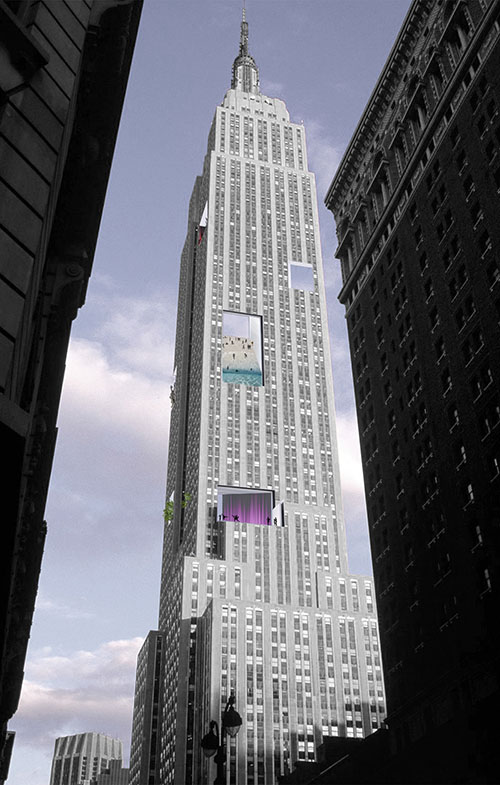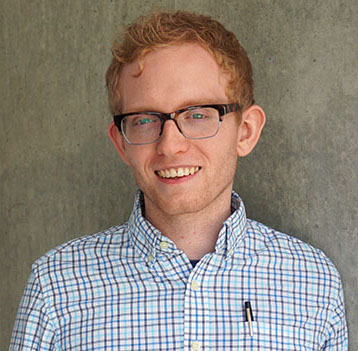
FAYETTEVILLE, Ark. – Aging is not only a problem for people, but also is a major problem for buildings, countries and ideas. For participants in the Lyceum architecture competition, this is a challenge that must be conquered, and the Fay Jones School of Architecture accomplished the feat in this year's competition.
The Lyceum Fellowship was established in 1985 to develop new design perspectives and to inspire creative thought in the field of architecture. With innovative programs and awards with travel grants to help influence students' studying, the Lyceum is a competition that architecture students around North America seek to advance in.
As "invite-only," the Lyceum is a prestigious competition for architecture students. For the past eight years, the University of Arkansas has been invited to participate, but it was only this year that third-year Fay Jones School architecture students took home the majority of the nine prizes. (Previously, Joey Weishaar won second prize in the 2011 competition, and Ryan Wilmes won a merit award in 2008.)
With each year of the competition comes a renovated design idea. This year, the program prompt informed students they would need to rethink the design of the Empire State Building to better fit the elderly demographic.
Frank Jacobus, an assistant professor in the Fay Jones School, was part of the inspiration process for the students in his third-year studio that competed.
"When I first received the brief, I thought, 'I don't want to do this project.' But then, as I started to think about it more, it began to intrigue me, so I embraced it," Jacobus said. "I always had the attitude that, no matter what, we have to approach it like we're going to win. I think we did that well."
Jacobus said that competing students only had six weeks to get their designs finished and sent off to the competition. So, to prepare students, he and other faculty members held a mock competition and review in the department.
"In six weeks, the Empire State Building? That's a big scale and a daunting task. Our first real challenge as instructors was to convince and engrain in the students how big the Empire State Building is, and how it was put together," Jacobus said. "So we underwent frame studies, where we looked at the building's structural skeleton, skin studies to see the articulation of glazing and envelope materials, and then circulation studies, how people move through the building."
A studio class lasts four hours. Once the project was announced, the task of the day was to build six different models in two and a half hours. The architecture department lined up tables in the galleries, and the mock competition ensued.
"It looked like Manhattan. It was like the island of Manhattan stretched across the studio; it was fantastic. I think many students would say their final ideas came out of that exercise," Jacobus said.
 |
| Dylan Hursley, third-year architecture student |
Dylan Hursley, who won second prize this year, said that, while working on his design of the Empire State Building, he realized it was "an iconic building." He came upon his idea early on and progressed from there.
"My strategy was to create voids that would allow light to get to the core. I wanted to make it visually appealing," Hursley said.
Hursley understood that he was not completely alone in his work either.
"I wanted feedback from everyone. I tried to get as many people involved as I could," he said.
Hursley found out that he placed the last Sunday of spring break. He had forgotten about the competition because the work had been submitted weeks before, and he said he was quite surprised when he got the call and learned the exciting news.
"The call came from Hawaii, and when I answered, there was a monotone voice on the other end. I honestly thought it was an insurance call or something," Hursley said. "I was shocked; it was a good surprise."
Hursley was not the only one in his family to get a call from Lyceum. His twin brother, Evan, also was recognized in the Lyceum program with a merit award.
"Right after I got the call, he got a call saying he got a merit. We were told that this was the first time in Lyceum history that two brothers won together," Dylan Hursley said.
The second prize includes $7,500 for two months of travel. Hursley has not made an itinerary yet, but said he does plan on spending next spring at the U of A Rome Center for study abroad and then extending his travel for two months after the end of the spring semester.
"I'm thinking about Copenhagen or Barcelona, Spain. I've always liked that type of architecture," Hursley said with a smile. "I'm not sure I have much of my own style yet, but I'm a big fan of bright colors in my work."
During the six weeks of work on the Empire State Building redesign, Hursley said that the stress "wasn't too bad."
Jacobus said that he was more hands-on with his teaching in the studio and made sure to keep the "every day crisis moments" there to a minimum.
"There may have been stress sometimes, but there really were not any crisis moments. I'm very proud of the students. The Lyceum can be a great thing. I'm happy we get to participate and hope we continue if invited again," Jacobus said. "This is a positive thing for students. They have a newfound confidence and now know they can be nationally competitive."
Positivity was a large part in keeping on track with the project. It is evident that Jacobus keeps a good relationship with his students as a mentor, critic and friend.
Finding out about the awards "truly was thrilling to me. There was a kind of buzz in the air, a vindication when we won. I tried as much as possible to be positive," Jacobus said. "I believe in the power of positivity as a teaching approach. You don't have to be brutal or hurtful to teach. Positive voices prevailed, and I was blown away by the results."
Along with the Hursley brothers' success in this year's Lyceum, Amy Larson won a citation, and Meghan Davis and Sarah Tappe both won merit awards.
Contacts
Julia Trupp, communications intern
Fay Jones School of Architecture
479-575-4704, jmtrupp@uark.edu
Michelle Parks, director of communications
Fay Jones School of Architecture
479-575-4704, mparks17@uark.edu